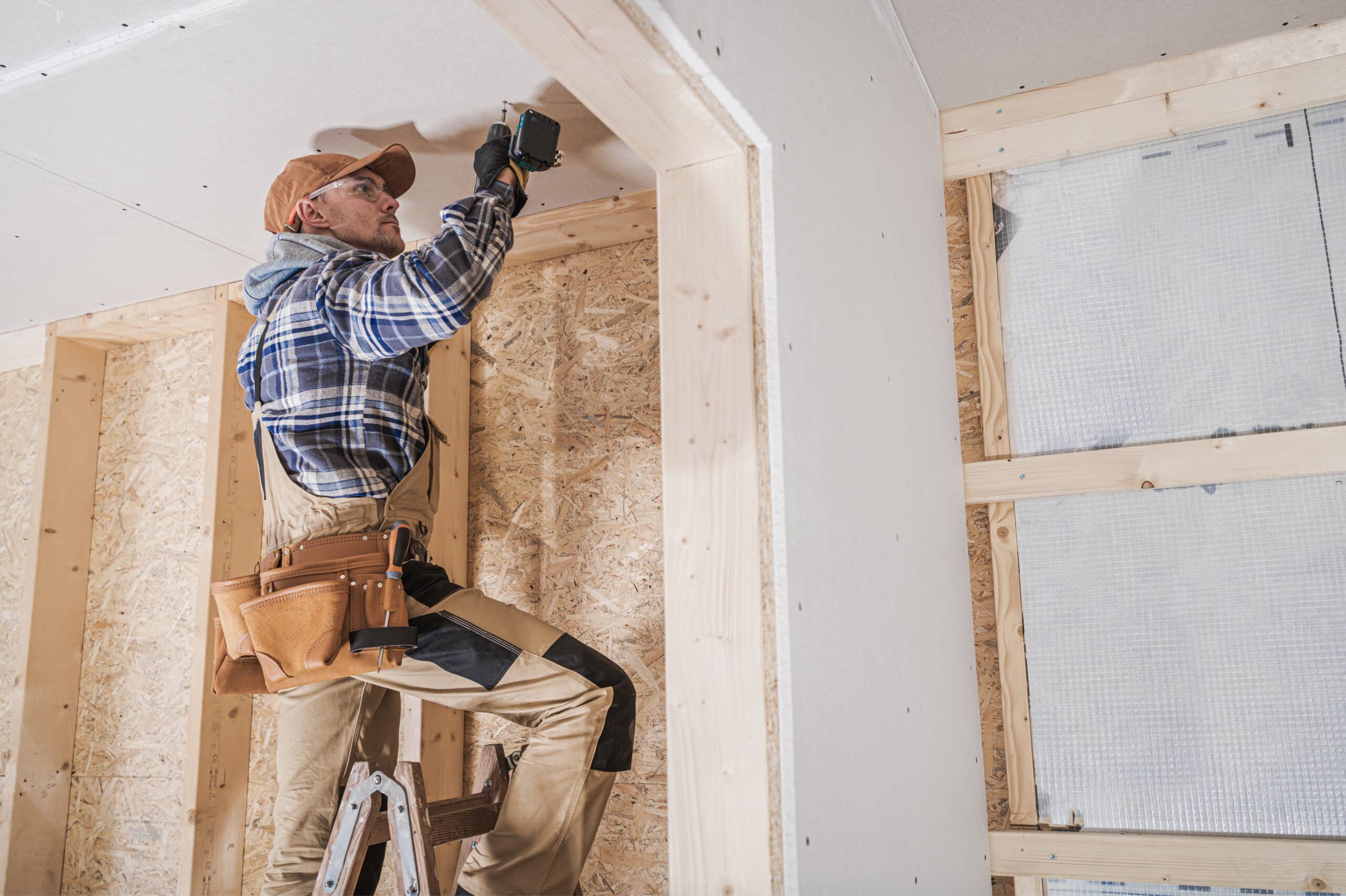Complete Overview to Reliable and reliable Drywall Installment
Drywall installation is a crucial part of any type of construction or restoration task, demanding a thorough method to make certain both effectiveness and integrity. It is important to check out the subtleties of each step in the procedure, as they jointly contribute to the overall success of the drywall installment.
Important Devices for Drywalling
When starting a drywall installation job, having the right tools is crucial for accomplishing a specialist finish. Important devices include a drywall knife, tape action, and a T-square, which are fundamental for precise dimensions and smooth cuts. A drywall lift is additionally very beneficial, particularly for ceiling setups, permitting for easier handling of hefty panels.
For fastening the drywall, a cordless drill and drywall screws are required. The drill should be equipped with a drywall little bit to make certain efficiency and precision. Additionally, an essential device is the drywall saw, which promotes reducing about other obstacles and electrical outlets.

Additionally, protective gear such as safety glasses and a dirt mask are vital to ensure individual safety and security throughout the setup procedure. Making use of the right devices not only enhances the top quality of the installment but also streamlines the operations, making the job much more efficient general.
Preparing the Area

Next, analyze the condition of the ceilings and walls. Fix any existing damages, such as holes, fractures, or peeling paint, to make sure a smooth and even surface for drywall application. In addition, check for electric outlets, plumbing lines, and a/c ducts, marking their areas to avoid difficulties during setup.
It is additionally important to gauge the space precisely, determining the dimensions of the walls and ceilings to determine the proper quantity of drywall required. Create a comprehensive plan that consists of the design and alignment of the drywall panels.
Installation Methods
Reliable installation methods are vital for attaining a view it professional coating in drywall projects. Appropriate dimension and cutting of drywall sheets are basic steps. Always determine the wall surface room properly, allowing for any buttons or electrical outlets. Use an energy knife for clean cuts, scoring the paper face and snapping the board along the scored line.
When hanging drywall, start from the top and work downward, guaranteeing that the long edge of the board is perpendicular to the framing. Secure the sheets with screws rather than nails, which provide greater holding power and reduce the risk of popping. Area screws every 12 inches along the sides and every 16 inches in the area of the board.
For edges, utilize corner beads to achieve sharp, tidy sides. When mounting on ceilings, utilize a drywall lift or have a partner assist in holding the sheets in position (drywall contractor). Maintain a void of concerning 1/4 inch over the floor and ceiling to accommodate development and tightening
Completing Touches

When the tape is in area, it's time to apply the initial coat of joint substance, also recognized as mud. Utilize a 10 to 12-inch taping blade to spread the substance evenly over the taped joints, feathering the sides to mix with the bordering drywall.
Allow the substance to completely dry completely, typically 1 day. After drying, sand the surface gently with fine-grit sandpaper to eliminate any type of imperfections. drywall repair. Repeat the mudding and fining sand process, normally 2 to three layers, making sure each layer is smooth and flush with the drywall surface
Usual Blunders to Stay Clear Of
Many Do it yourself fanatics run into risks during drywall installation that can endanger the final outcomes. One typical mistake is failing to effectively measure and reduce drywall sheets.
Another frequent error is incorrect attachment. Making use of too couple of screws or nails can cause loose drywall, while overdriving bolts can cause the paper to tear, compromising the structure. It's important to preserve constant spacing, generally every 16 inches, and to guarantee that fasteners are flush with the surface.
Moreover, not attending to dampness concerns prior to installment can lead to mold and mildew growth and architectural damages. Always examine the setting and use moisture-resistant drywall in high-humidity areas.
Conclusion
Reliable and reputable drywall installation requires precise interest to detail throughout the process. Avoiding common errors further adds to an read expert outcome, underscoring the significance of precision and method in effective drywall projects.
It is crucial to explore the nuances of each step in the procedure, as they jointly contribute to the total success of the drywall setup.When getting started on a drywall installment project, having the right devices is essential for attaining a specialist finish.For fastening the drywall, a cordless drill and drywall screws are required.Correctly preparing the area is necessary for an effective drywall setup.Efficient setup techniques are crucial for achieving a professional finish in drywall tasks.